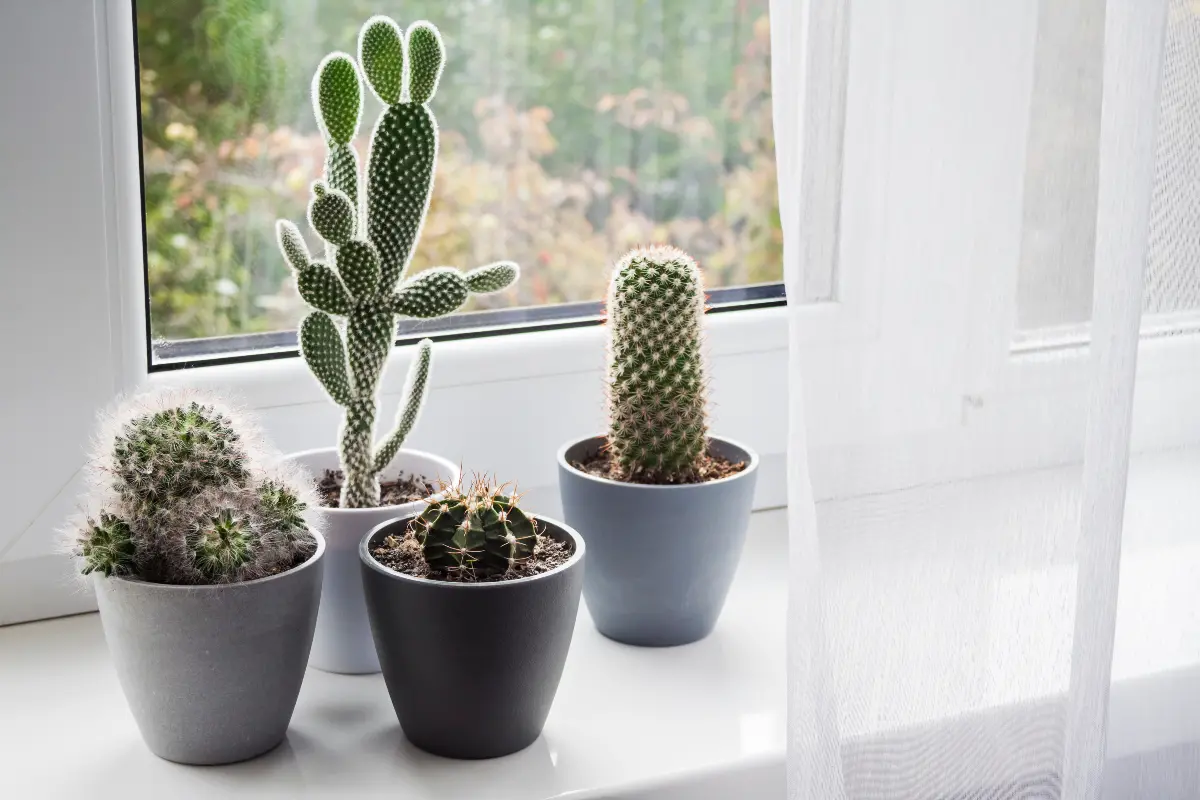In the diverse kingdom of flora, one group of plants has evolved to thrive in some of the harshest environments on earth: the fascinating cacti. Equipped with an arsenal of survival mechanisms and known for their distinctive thorns, cacti are not just a symbol of the desert but a testament to nature’s ingenuity.

The cacti family, known scientifically as Cactaceae, is native primarily to the Americas with one exception, the Rhipsalis baccifera, which is also found in Africa and Sri Lanka. This diverse plant family includes over 1750 known species, ranging from the towering Saguaro of the Sonoran Desert to the diminutive Blossfeldia liliputiana, which measures only about a centimeter in diameter.
One of the most striking features of cacti is their thorns, which are actually modified leaves. This transformation is a masterstroke of adaptation, minimizing the surface area through which water can be lost while also providing a formidable defense against thirsty animals. But not all cacti are prickly; some have evolved to have soft, hair-like spines or no spines at all, adapting to their environments in different ways.
Cacti are champions of water conservation. Their stems have taken the roles of leaves in photosynthesis and expanded to store water. Their skin is waxy, and their pores, called stomata, open only at night to reduce evaporation losses during the blistering daytime heat. This process, known as CAM photosynthesis (Crassulacean Acid Metabolism), allows them to thrive in environments where water is scarce.

The flowers of cacti are yet another marvel. Typically large and vibrant, they have evolved to attract the specific pollinators of their habitats, such as bees, hummingbirds, and even bats. The saguaro cactus’s white, night-blooming flowers are pollinated by nocturnal creatures, while the barrel cactus’s midday bloom beckons the diurnal pollinators. The flowers often have radial or bilateral symmetry and only open for a very short period, sometimes just a single night, in a dazzling display of evolutionary efficiency.
Cacti fruits are just as interesting as their flowers. The dragon fruit, borne from members of the genus Hylocereus, is a particularly exotic example with its vibrant pink or yellow skin and speckled flesh. Another cactus, the prickly pear or Opuntia, produces fruits that are widely consumed and even used to make candies and jellies.
Beyond their ecological role, cacti have long had a place in human culture. Native peoples of the Americas have used various cactus species as food, medicine, and building materials. The saguaro cactus, with its large, woody ribs, provided material for construction and its fruit for sustenance. The San Pedro cactus has been used for thousands of years in traditional Andean medicine and spiritual ceremonies.
In terms of cultivation, cacti have gained immense popularity as ornamental plants due to their striking forms and resilience. They are well-suited for xeriscaping, a form of landscaping that reduces or eliminates the need for supplemental water, and can thrive in a home setting when provided with enough light. The Christmas cactus, belonging to the genus Schlumbergera, is cherished for its beautiful, cascading flowers and is a common sight in many homes during the holiday season.

The resilience of cacti also has lessons to offer in the face of climate change. As more regions around the world become prone to drought conditions, studying the ways cacti conserve water and adapt to their environment can provide insights into developing more drought-tolerant crops.
However, despite their hardiness, many cacti are at risk due to human activities. Overharvesting, habitat destruction, and the illegal plant trade threaten numerous species, with several listed as endangered. Conservation efforts and sustainable practices are vital to ensure that these remarkable plants continue to adorn our landscapes for generations to come.
In conclusion, cacti are not merely spiny plants relegated to desert landscapes; they are a group teeming with diversity and sophistication. Their unique adaptations to conserve water, their interaction with pollinators, and their significance to humans both in ecological and cultural contexts make them a captivating subject of study and admiration. As they continue to intrigue botanists, nature enthusiasts, and plant lovers alike, cacti stand as a symbol of life’s remarkable ability to flourish against the odds, a true example of beauty—thorns and all.